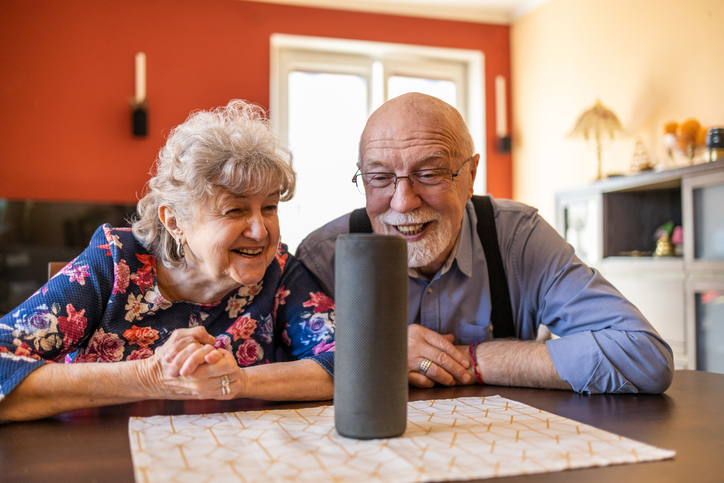When we think about products for older adults, the term “caring for them” often dominates the conversation. A recent article in Tech Enhanced Life asked some interesting questions about where we’re going with aging tech. Many assume that once someone reaches a certain age – say, 65 – they need support, and that all innovations should focus on caregiving. But this view oversimplifies aging and misses a vital point: older adults are not a monolithic group. For many, aging isn’t solely about needing care. It’s about maintaining independence, dignity, and, above all, quality of life.
Traditional aging tech, or “Agetech,” has focused heavily on preventing and responding to falls. Think of the classic medical alert pendants designed to summon help after a fall. “Help, I’ve fallen and I can’t get up.” You know the line. While effective, these pendants are often stigmatizing and remind users of hospital stays or infirmity, reinforcing the idea of dependence.
On the other hand, consider a more modern approach to fall detection: the Apple Watch or other smartwatches with built-in fall detection. These devices may not be “perfect” medical devices, but they achieve something equally important—they empower their users. Wearing an Apple Watch isn’t just about staying safe. It’s about staying connected, stylish, and up-to-date with technology. These devices support both safety and a sense of vibrancy, sending a message of active aging rather than frailty. This author wears one and while I get messages saying it looks like I’ve had a fall when I haven’t, the technology is improving and I appreciate that it recognizes that falls happen in various ways.
This shift towards quality of life over purely caregiving solutions opens up exciting possibilities. Consumer electronics, like smartwatches, earbuds with hearing aid capabilities, and fitness trackers, are reshaping what’s possible for older adults. Instead of products that scream “I need help,” these devices fit seamlessly into everyday life, offering support without stigma. For example, Apple’s recent move to add hearing aid functionalities to its AirPods is not only a nod to accessibility but also a stylish, non-stigmatizing solution that users can wear proudly.
A growing number of older adults are vibrant and active, seeking ways to enjoy life fully. For this group, technology can act as an enabler of independence rather than a reminder of limitations. Solutions focused on quality of life – helping them maintain their routines, stay socially connected, or even achieve new goals – are likely to resonate more deeply than traditional Agetech products.
So, what does this mean for the future of aging tech? Perhaps the key is to recognize the distinct needs within the older adult population. For some, caregiving devices are essential; these individuals benefit most from medtech solutions, where safety and medical-grade reliability are top priorities. But for many others, there’s an opportunity to focus on “aspirational” tech – products that empower them, maintain their dignity, and enhance their everyday lives without labelling them as “patients.”
If you’re exploring quality-of-life solutions, consider looking beyond the usual Agetech options. Increasingly, consumer electronics may offer the right blend of functionality and style to support your active, independent lifestyle. For those developing products for older adults, it might be time to rethink the mission. Are you creating a medical device, or are you building a product that will support older adults’ independence, confidence and vitality?
In the end, the future of aging tech may lie not in one-size-fits-all solutions, but in empowering older adults with options that respect their individuality and support those who want to remain independent for as long as possible.






Add Your Voice
0 Comments
Join the Discussion